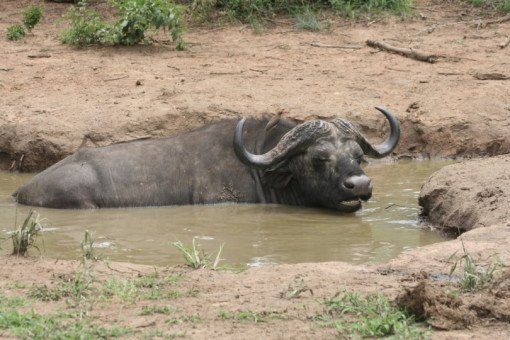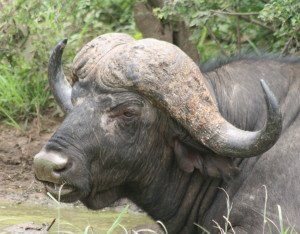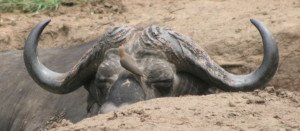There is a vast, largely untapped reservoir of footballing talent lurking out of sight and out of mind near Johannesburg. The gritty industrial area known as the Vaal south of Jozi is a region that lives in the shadow of the great city and its famous stepchild, Soweto.
More than one million people live in the Sedibeng region that includes historic locations like Sharpeville, Sebokeng and Evaton. The Vaal is also the gravitational heart for the northern Free State dorps of Heilbron, Parys, Kroonstad, Sasolburg and also Heidelberg.
Rich in political history, this area has a lesser known heroic soccer past too, with a local team being the first to represent then newly-democratic South Africa in African competition.
While the locals complain about the roads that are rapidly becoming potholes surrounded by islands of tar and wonder how the massive ArcelorMittal factory in Vanderbijlpark benefits the community, there is a group of residents who are laying the foundations for not only the development of all that football talent in the region, but also a long-desired return of professional soccer to the Vaal Triangle.
Vaal Professionals were based in the Sedibeng region and used to be one of the most feared teams in the old national soccer league, winning the BobSave SuperBowl (now the Nedbank Cup) in 1994, becoming the first South African team to play in the Mandela Cup – the African Cup Winners’ cup – and being a founder member of the PSL in 1996.
But football politics and the depressed economic situation of the region reared their ugly heads and Vaal Professionals disappeared around the turn of the century. Their coach at that time was the former Kaizer Chiefs legend Simon “Bull” Lehoko and he is behind the efforts to resurrect the club where his fabulous career started.
“Back in 1970, the NPSL was formed and we were one of the founder members. I played for Vaal Professionals for seven years, but in my eighth year I went to Kaizer Chiefs and Vaal Professionals were relegated to the second division,” said Lehoko.
“I spent eight years at Kaizer Chiefs before I retired in 1985 because of my knee. Kaizer Motaung refused to let me go, but I came back home to work with young guys and rebuild the Vaal Professionals team with Johannes “Man” Direro and 10 other players from Real X20, my father’s team.
“Then the split came, when the NSL was formed in 1985 and they took all the best teams and sponsors. But the NPSL president was our own George Thabe, a local man, so it made it tough for us to choose who to follow.”
He said, “But the George Thabe Stadium was still full when we played the top teams and it became a stronghold of the NPSL, even though the NSL was favoured in places like Boipatong and Sebokeng. But there was no prize money in the NPSL for three or four years and the players called a meeting with the supporters. Players were starting to go for nothing and we were aware that we could lose the whole team.
“So we decided to leave the NPSL but the NSL gave us a second-division place in 1988 even though they had promised us a first division place because we were very strong, winning the NPSL from 1986 to 1988. We chased promotion until 1991, but there was a lot of bribery in those days and points were taken away from us.
“We would lead for the whole year but then it would fall apart at the end with referees giving us red cards and other things. An example was what happened to us when we were leading 3-0 at Potgietersrus. The referee gave penalties against us until it was 3-4 and then the red cards came.
“Teams fielded ineligible players against us and we won those cases despite the arbitrator being the same guy who heard the original case. We were also offered R150 000 to only take promotion the following year,” Lehoko remembered.
Promotion eventually came and Vaal Professionals were a tough side to beat, especially at their home venues of George Thabe and Zamdela stadiums.
“We were doing well and teams like Chiefs and Pirates used to jump the fences here to avoid the muti they thought was outside the change rooms …
“But by 1997/98, everybody was after us. We were offered R8-million to disappear but this club serves the community! They won’t go to Orlando Stadium or go watch Kaizer Chiefs, we even had a supporters’ club in Soweto.
“So they tried to relegate us using the referees. But one referee actually gave his money back, saying Vaal Professionals were too powerful. The only way they could beat us was by underhand means,” he said.
While Lehoko and several of his former Vaal Professionals colleagues have their hearts set on top-level football returning to the area, they are also squarely behind efforts at grassroots level to develop not only the football skills of youth in the area but also their life skills and ability to handle the tremendous social challenges they face.
The idea of drawing on the experience of these former professional footballers was Richard “Bricks” Mokolo’s. A former Vaal Professionals player, Mokolo is a paralegal for the Centre for Human Rights and the Orange Farm Human Rights Advice Centre, and is also involved in campaigns against racism and xenophobia.
He formed the Soccer Legends in 2007 and the impressive initiative benefits both the former players, who often don’t know what to do with themselves once their careers have ended, and the youth who need guidance and inspiration.
“For most former players, it’s a dramatic life change when you retire and it can become very stressful. They feel they’ve lost control of their lives; you’re no more Bull the Man. That kind of prestige is addictive and they lose their dignity along with the fame and respect. Now you’re on your own plus you have to provide for your family and you’re unemployed,” said Mokolo.
“But we’ve opened the door with this programme for the legends to get recognition and their space back. Before, a lot of these former players were unemployed and they would just drink during the day. Man Direro was a teacher and this gives him a chance to do something, to share his experience with learners and assist with life skills as well as being a soccer coach. There are about 40 former professional footballers in the Soccer Legends and they can also assist current players to plan and prepare for the future.”
This means half the benefit goes to the former players doing the teaching and the other half to their students. But they are not just being given football tips by the pros but also being taught life skills.
“It’s not just about soccer but also about social challenges. We’re not just teaching them skills because they come from poor families and we can’t forget about their backgrounds. We teach the Soccer Legends to deal with these issues. We’ve conducted research into the challenges facing both current and future players, and substance abuse is the main problem.
“We also offer counselling for those who’ve suffered domestic violence and we can mediate as alternative role models in the community. We encourage the children to use libraries and we support reading and writing projects.
“The kids may not have seen the Soccer Legends play, but when they’re introduced it motivates children through sports,” Mokolo points out.
A prime example of the success of the Soccer Legends project comes in the form of the Jet Nteo and Mohloli secondary schools, who have excelled in the Motsepe Cup, a top-class national schools competition that this year offers R1-million to the winning team.
A year after introducing the Soccer Legends programme to the Boipatong school, Jet Nteo won the Motsepe Cup and Mohloli, from Sharpeville, also have a fine record in the competition.
Lehoko said: “Bricks is a professor of life skills and he organised courses for us at the Sports Science Institute, the department of sports and recreation and Theta. But to do these courses you rely on sponsorships.”
The Soccer Legends is a pilot project and Mokolo says a lack of funding is all that is holding it back from making an even bigger impact in the Sedibeng area.
“We’ve started a pilot project and we’re seeing the results. The problem is we have no sponsors. Most times we’re in the schools it’s because we’ve volunteered and we can’t keep the children for more than three hours without food. The municipality says they have no money to help us.”
Among the dozens of complaints heard in one day chatting to the Soccer Legends were that local politicians are more interested in petty power plays than actually supporting efforts to benefit the community, that promises made before the 2010 World Cup have never come to fruition and that professional teams don’t belong to the communities they are based in.
“People inside the municipality want to control the football projects, but they know nothing about football and they don’t want to bring these opportunities to the Soccer Legends. They’re not actually implementing anything,” Aggripa “Malombo” Tsoari complained.
“Most people here are saying the Soccer Legends are the last hope,” according to Mokolo.
“By 2008 we were strong and preparing for the World Cup. They were told after the World Cup that their lives would change … We were given hope that life will change, and things have changed, but only to make us poorer.”
Not coincidentally, the hundreds of protesters who gathered in Zamdela in early April were venting their anger at the alleged corruption in mayor Brutus Mahlaku’s office.
As Mokolo pointed out, footballers have also been at the forefront of local politics in this country. “We used to say we were victims of apartheid and we couldn’t take our talent to the outside world. At Vaal Professionals, one of our officials was a security policeman. He would take our training in the morning and then arrest us at night for being protesters!
“It was a milestone when football liberation was achieved and we were integrated 19 years before Nelson Mandela was released. But now we’re football victims but no one called us to the TRC.”
So instead Mokolo, the sort of proactive, hands-on administrator that gets things going and makes ideas work, has set up the Bull Lehoko Fund to “capacitate” the Soccer Legends. “There’s no chance of politicians doing anything, so we need to come up with strategies to survive, like the Bull Lehoko Fund which links football to social challenges like nutrition, food and education. As a group, we want to arm ourselves with different skills,” said Mokolo.
How exciting would it be to see not only the return of Vaal Professionals but also the grassroots growth of the game in that area being put under the control of professionals like the Soccer Legends?
http://www.dailymaverick.co.za/article/2013-07-30-soccer-the-forgotten-talents-of-the-vaal-professionals/#.V583c_l97IU



![IMG_1999[1]](http://kenborland.com/wp-content/uploads/2017/07/IMG_19991-e1500983479482-300x261.jpg)

